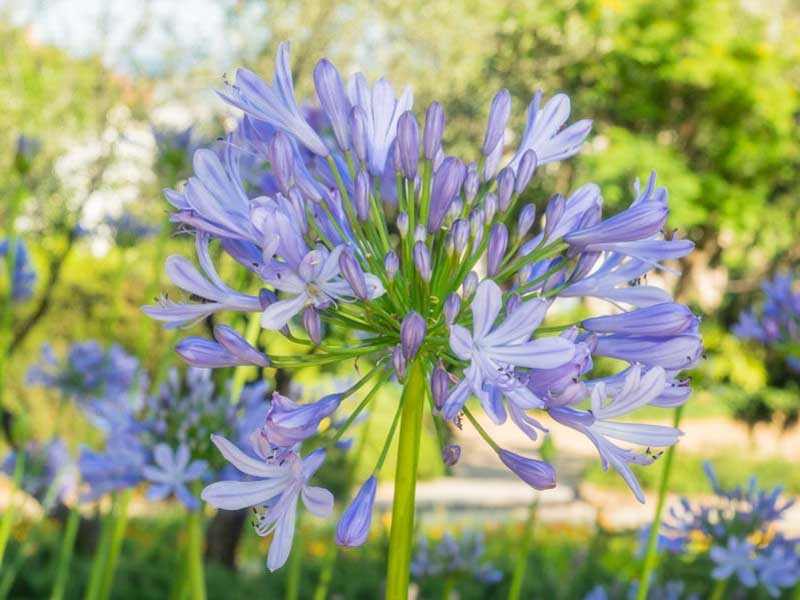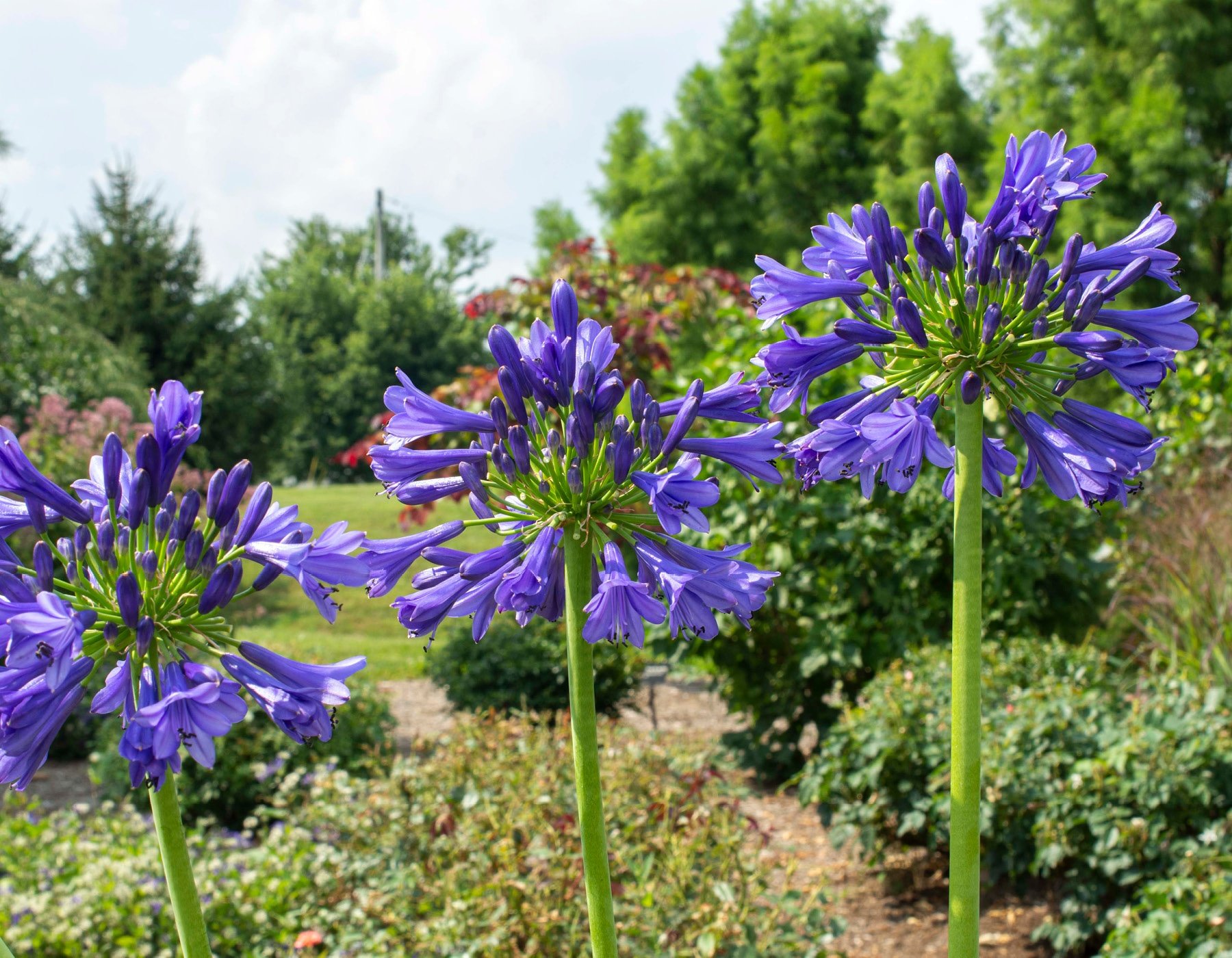Agapanthus Friend Plant Kingdoms: Perfect Pairings for Your Garden
Agapanthus Friend Plant Kingdoms: Perfect Pairings for Your Garden
Blog Article
Understanding the Art of Agapanthus Care: Crucial Actions for Healthy And Balanced Growth and Vivid Blooms
In the world of horticulture, the cultivation of agapanthus stands as a gratifying endeavor for those who look for to support these sophisticated flowering plants. With their striking blooms and elegant vegetation, agapanthus has actually recorded the attention of gardeners worldwide. However, attaining optimal development and vibrant blooms requires a nuanced strategy that encompasses various important steps. From choosing the ideal selection to understanding trimming techniques, the journey towards cultivating prospering agapanthus plants is complex and holds the crucial to unlocking the full potential of these herb treasures.

Selecting the Right Agapanthus Range

When picking the appropriate Agapanthus range for your yard, think about factors such as environment viability, flower color, and development practice. Agapanthus, generally called Lily of the Nile or African lily, can be found in a selection of shades ranging from tones of purple and blue to white. Pick a flower shade that matches your existing garden scheme to produce a harmonious landscape. In addition, consider the climate in your region to make certain the Agapanthus range you select can thrive in your certain conditions. Some selections are more forgiving of chilly temperatures, while others choose warmer climates. Recognizing the development practice of different Agapanthus ranges is important for correct positioning within your yard. Some ranges have a clumping growth habit, suitable for containers or boundaries, while others have a more dispersing nature, ideal for ground cover or mass plantings. By meticulously reviewing these factors, you can pick the ideal Agapanthus variety to enhance the charm of your garden.
Perfect Planting Conditions
Considering the ideal environmental demands is essential for successful Agapanthus cultivation. Agapanthus prospers in well-draining dirt with a somewhat acidic to neutral pH degree. When planting, choose an area that obtains full sunlight to partial color. In hotter climates, supplying some afternoon shade can stop scorching of the leaves. Agapanthus plants are delicate to chilly temperature levels and should be protected from frost during wintertime months.
To make certain healthy development and dynamic blooms, plant Agapanthus bulbs at a depth of regarding 2-4 inches and area them 8-12 inches apart. Mulching around the base of the plants assists maintain dampness and suppresses weed growth.
Watering and Fertilizing Tips
Keeping proper moisture degrees and providing crucial nutrients are crucial aspects in the treatment regimen for Agapanthus plants. It is crucial to strike a balance when it comes to watering Agapanthus. These plants choose consistently wet dirt but are at risk to root rot if overwatered. During the expanding season, water deeply once a week, ensuring the dirt is well-draining to stop waterlogging. In hotter environments or during periods of look at this site dry spell, more frequent watering may be required to maintain the soil uniformly damp. Nonetheless, reduce watering in the winter to avoid waterlogged conditions.
Feeding Agapanthus is crucial for advertising healthy and balanced development and respected blossoms. Use a well balanced fertilizer, such as a 10-10-10 formula, in the very early spring as see this here brand-new development emerges. By following these watering and feeding suggestions, you can ensure your Agapanthus plants prosper and create dynamic, resilient blossoms.
Pruning Techniques for Agapanthus
Trimming Agapanthus plants at the appropriate times and with appropriate methods is critical for keeping their health and promoting optimal development and flowering. The suitable time to prune Agapanthus is in late winter months or very early springtime prior to brand-new growth arises.
Deadheading spent flowers can additionally redirect the plant's energy into generating even more blooms instead than setting seeds. If you want to accumulate seeds for proliferation, leave some flowers to completely dry and fully grown on the plant.
Remember to utilize clean, sharp devices to make precise cuts and lower the danger of introducing illness. Agapanthus. Normal pruning will certainly aid maintain your Agapanthus looking cool and healthy while guaranteeing a bountiful screen of beautiful flowers
Handling Typical Insects and Conditions
After guaranteeing proper trimming techniques for Agapanthus, it is important to address common parasites and conditions that can impact the health and wellness and vigor of these plants. One typical bug that influences Agapanthus is the Agapanthus gall midget.
An additional common problem is fungal fallen leave area, which provides as dark lesions on the fallen leaves. To avoid fungal diseases, ensure great air circulation around the plants, stay clear of above watering, and remove any contaminated leaves immediately. Additionally, Agapanthus plants can deal with origin rot if they are grown in improperly draining pipes soil. To stop this, plant Agapanthus in well-draining soil and prevent overwatering. By being vigilant and taking timely activity against pests and illness, you can help your Agapanthus plants thrive and generate lively blossoms.

Final Thought
To conclude, mastering the art of agapanthus care involves choosing the best range, offering optimal planting conditions, proper watering and feeding, appropriate trimming strategies, and dealing with typical insects and illness. By complying with these vital actions, you can make certain healthy development and vivid flowers for your agapanthus plants. Remember to consistently monitor and preserve your plants to promote their total well-being and long life.
To make certain healthy development and dynamic flowers, plant Agapanthus bulbs at a deepness of regarding 2-4 inches and area them Go Here 8-12 inches apart. By following these watering and fertilizing suggestions, you can ensure your Agapanthus plants prosper and produce dynamic, long-lasting blossoms.
One common insect that affects Agapanthus is the Agapanthus gall midget. In addition, Agapanthus plants can experience from root rot if they are grown in inadequately draining soil. By complying with these crucial steps, you can ensure healthy and balanced growth and lively flowers for your agapanthus plants.
Report this page